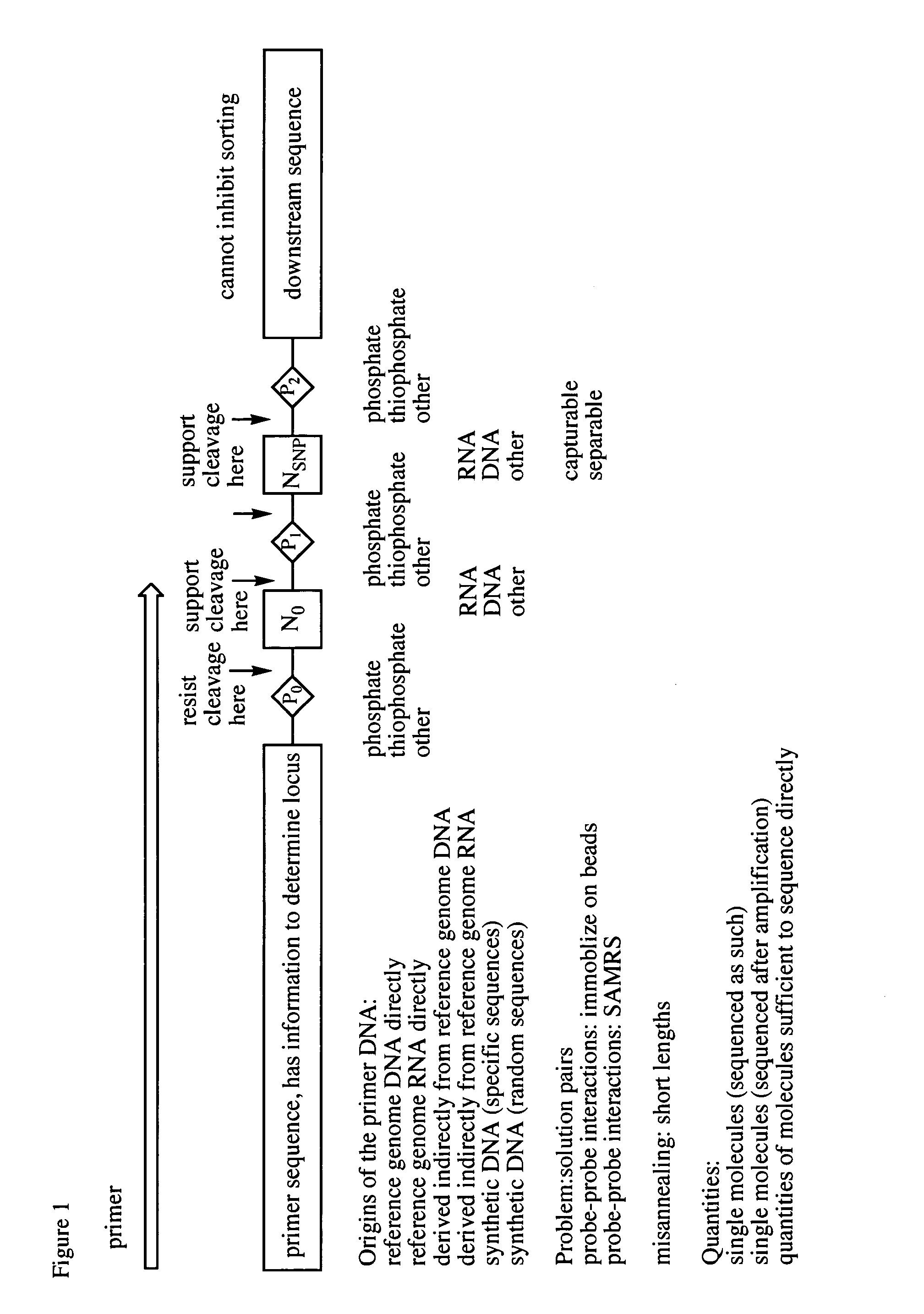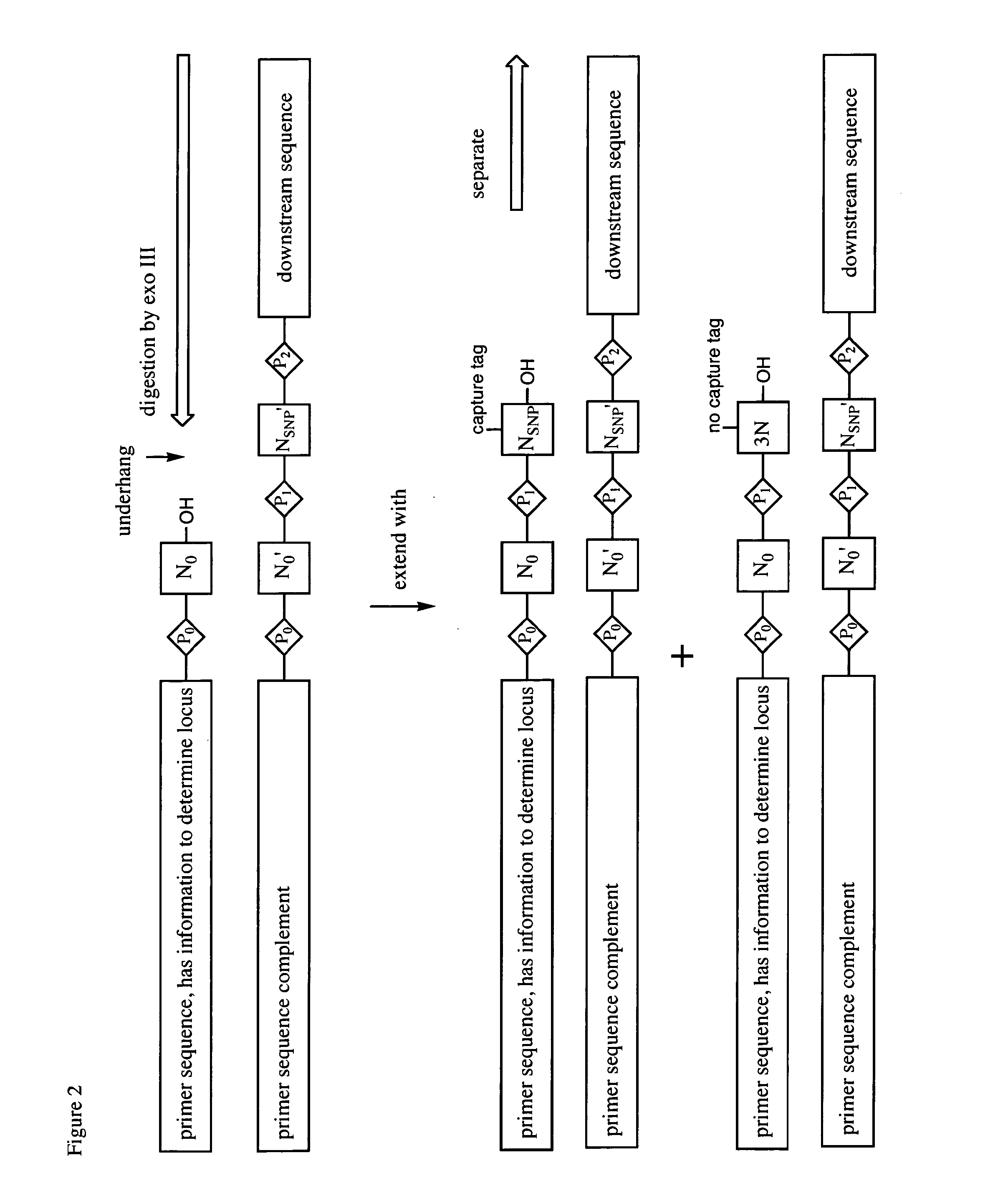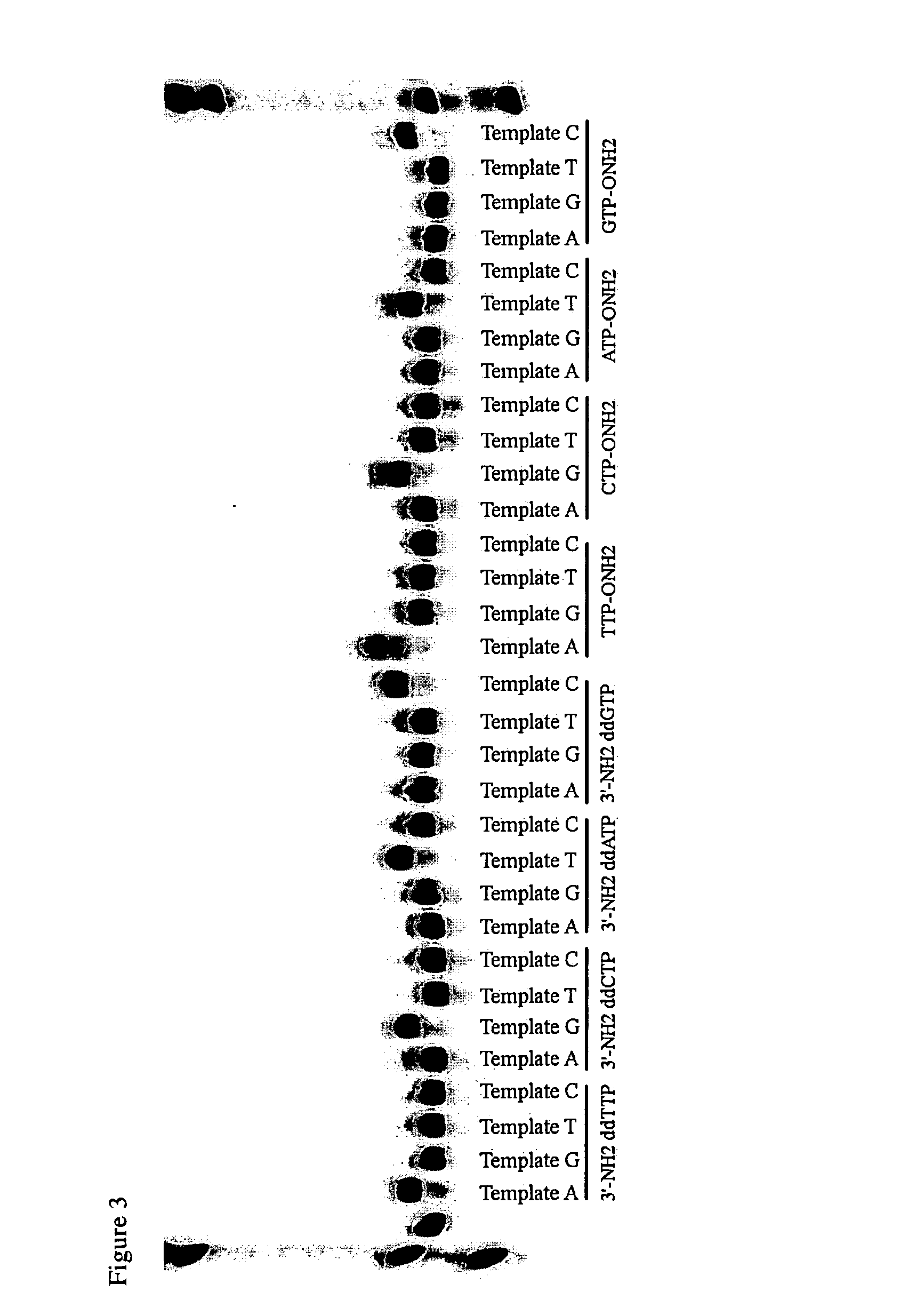Differential detection of single nucleotide polymorphisms
a single nucleotide polymorphism and detection method technology, applied in the field of differential detection of single nucleotide polymorphisms, can solve the problem of few tools for high-throughout discovery of unknown genetic variations
- Summary
- Abstract
- Description
- Claims
- Application Information
AI Technical Summary
Benefits of technology
Problems solved by technology
Method used
Image
Examples
example 1
The Ligate-Cleave Procedure to Generate Primer Sets
[0128]In addition to creating primer sets by synthesis of specific DNA sequences or by sorting DNA of random sequence, primers can be generated from the reference genome DNA itself (the physical DNA). This includes shearing the physical DNA (by sonication or focused sonication), by restriction endonucleases, by culling back with an exonuclease, ITCHY technologies, or other ways of creating truncated fragment libraries that are well known in the art.
[0129]This example illustrates the use of blunt end ligation followed by restriction endonuclease fragmentation to give, with three known restriction endonuclease, three of the fragments. First, the DNA from the reference genome is fragmented to fragments that are preferably 50-1000 nucleotides in length. The Covaris instrument in the art is known to provide such lengths, with shorter lengths arising from longer Covaris treatment. The ends of the fragments are made blunt ended (“polished”...
example 2
Immobilized Primer Sets
[0131]An alternative approach to generating the primer sets begins with the preparation of all possible primer sequences, followed by the use of the physical DNA from a reference genome to direct them into each of the four primer sets. The first example of this uses split-pool synthesis on beads, and a process that separates the bead-supported primers into the four sets set. One attribute of this particular architecture is that it allows, up front, an additional subtractive process that removes primers that prime on repeats. One invention for doing so is embedded into this example.
[0132]The work flowchart for a subtractive sequencing architecture is summarized in FIG. 4.1.
Procedure 1. Prepare the Beads Carrying a Library
[0133]The most general architecture has a primer for every site. Considering the human genome as representative of a large genome, discovering SNPs throughout formally requires ca. 6×109 primers (counting both strands). This is approximately al...
example 3
Determining Heterozygosity in a Diploid Genome
[0164]When characterizing an individual diploid genome, it is useful to identify the differences that distinguish the genetic material that is maternally derived from the material that is paternally derived. The number of differences is on the order of the number of differences in the genomes separating two individuals in a species. Further, depending on the extent to which the parents are representative of the population as a whole, a SNP separating the maternal and paternal genomic endowments has a good to excellent chance of being a SNP that distinguishes the individual genome from the average genome of the population.
[0165]Guided by the teachings of the instant application, one of skill in the art will appreciate that many architectures may enable this identification. This Example presents one, for a genome without repeats, a genome that is formally both the reference and the target.
Step 1.
[0166]Protocol 1. The physical DNA from the ...
PUM
| Property | Measurement | Unit |
|---|---|---|
| pH | aaaaa | aaaaa |
| volume | aaaaa | aaaaa |
| diameter | aaaaa | aaaaa |
Abstract
Description
Claims
Application Information
 Login to View More
Login to View More - R&D
- Intellectual Property
- Life Sciences
- Materials
- Tech Scout
- Unparalleled Data Quality
- Higher Quality Content
- 60% Fewer Hallucinations
Browse by: Latest US Patents, China's latest patents, Technical Efficacy Thesaurus, Application Domain, Technology Topic, Popular Technical Reports.
© 2025 PatSnap. All rights reserved.Legal|Privacy policy|Modern Slavery Act Transparency Statement|Sitemap|About US| Contact US: help@patsnap.com



